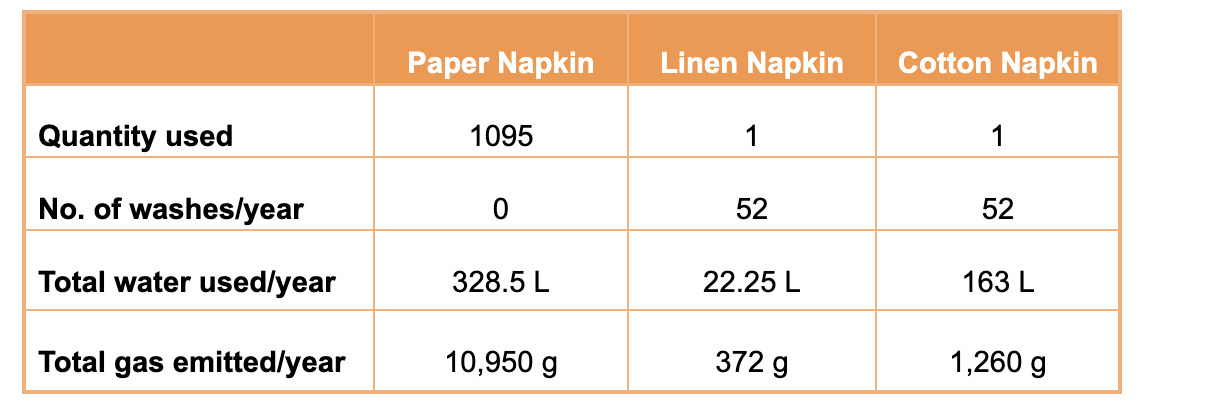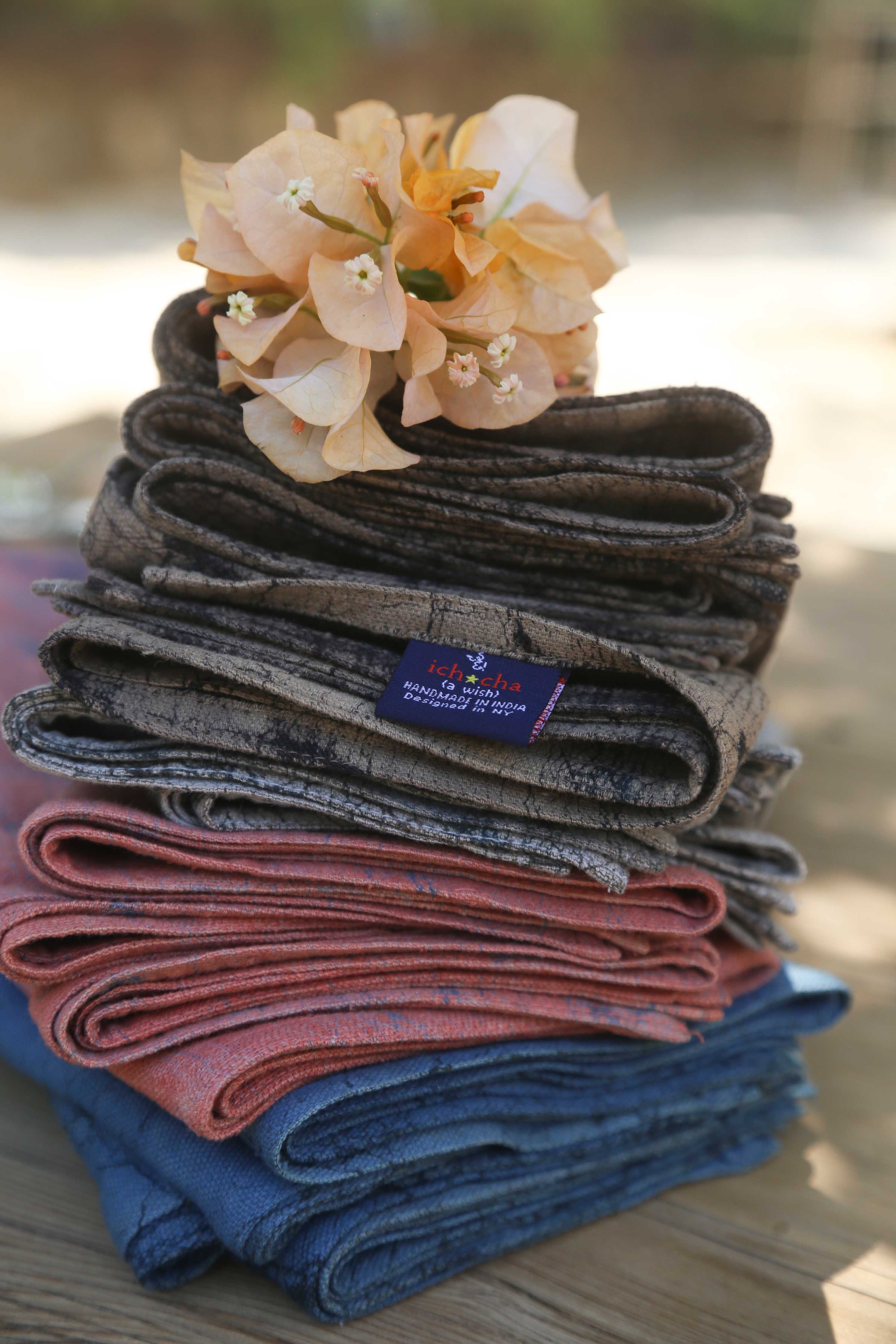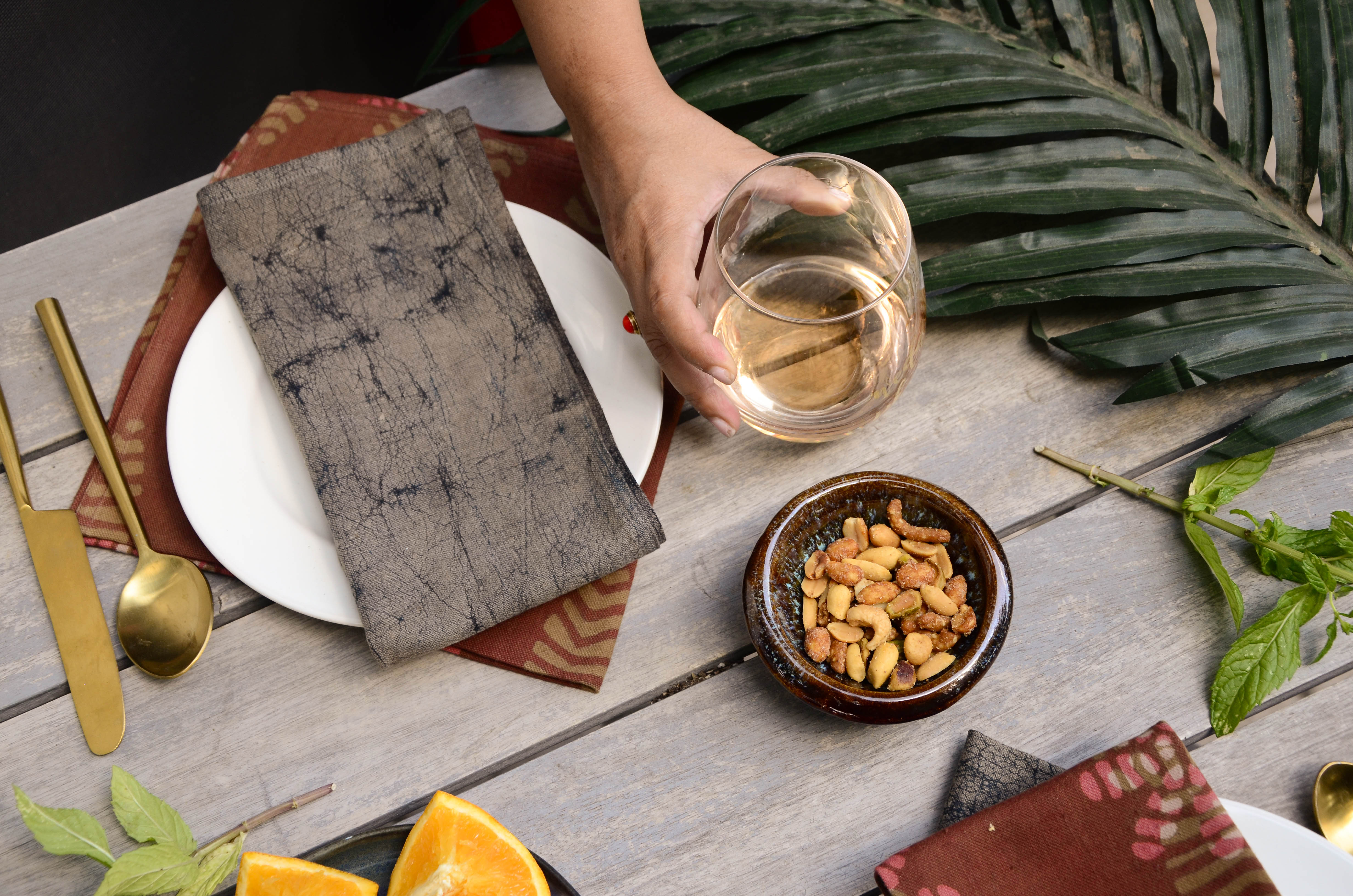Busting the cloth napkin myth: 6 reasons to switch from paper to cloth
25th Sep 2023
Cloth Napkins vs Paper: Which Is Better?
A lot of people hold strong misconceptions about cloth napkins. While many believe cloth napkins to be more expensive and less eco-friendly than paper napkins, others perceive paper to be more absorbent. Given that cloth napkins consume more water and give off more greenhouse gas than paper during production, it's easy to arrive at these conclusions.
Well, when we do some little calculations, what we discover differs from what's initially apparent.
Debunking these common misconceptions presents 6 reasons why switching to cotton napkins is better for the environment... and your pocket.
Let's get right to it!
1. Cloth napkins are more sustainable than paper napkins
Let's do some math, shall we?
According to a Treehugger report by Pablo Paster, if you add up the greenhouse gas emissions and water resources used to grow the raw materials and manufacture napkins, this is what you get.
Comparing the environmental impact of producing paper vs. cloth napkins

At first glance, paper napkins appear far more eco-friendly than cloth napkins, with linen still better than cotton.
But remember, while paper napkins can only be used once, we can reuse cloth napkins. So we have to look at the bigger picture.
According to Pablo, washing one cloth napkin using electricity (washing machine) emits about 5 grams of greenhouse gas and uses 0.25 liter of water.
Most Americans do their laundry once a week. So, assuming you wash each cloth napkin 52 times a year, you'll use 13L (52 x 0.25L) of water and generate 260g (52 x 5g) of emissions.
This is where things get interesting.
If you use an average of 3 paper napkins daily and trash them, that's 1,095 napkins a year. One paper napkin consumes 0.3L of water and releases 10g of emission to manufacture. That's 328.5L of water and 10,950g of emissions in one year!
One cotton napkin in a year uses only 163 liters of water (150L + 13L) and generates 1,260g of emissions (1000g + 260g).

Environmental impact of paper vs. cloth napkins after one year of use
Not to mention, that value doesn't include the gas emissions at landfills when burning paper napkins.
Now everything comes into perspective.
While the production of cloth napkins might be less eco-friendly than paper, their reusability makes them more sustainable in the long run. That's one reason to make the switch from paper to cloth napkins.
Find more about the environmental impact of cloth vs. paper napkins.
2. Cotton is even more sustainable than linen
Okay, this may catch you off guard, but just hear me out. All we've referred to is conventional cotton, which you find in most stores as it's easily sourced in large quantities and is cheaper. Organic cotton, on the other hand, is more eco-friendly than linen and paper.
Organic cotton produces 94% less greenhouse gas emissions than conventional cotton. That's because it doesn't require synthetic pesticides and fertilizers to grow. Rainfall is sufficient for organic cotton, eliminating the need for irrigation.
If one conventional cotton napkin emits 1,000g greenhouse gas during production and one organic cotton produces 94% less of that, that means one organic cotton napkin emits only 60g of greenhouse gas.
Environmental impact of linen, conventional cotton, and organic cotton production

Environmental impact of linen, conventional cotton, and organic cotton production
Organic cotton also prevents groundwater contamination. It has been found to have 98% less impact on water pollution than conventional cotton. If you wish to minimize your carbon footprint while shopping for napkins, go for napkins made from 100% organic cotton.
Shop 100% organic cotton napkins at ichcha.
3. Cloth napkins are more cost-effective than paper napkins
A set of eco-friendly cloth napkins for a family of four costs around $50. They can use that for 2 years. 1,000 pieces of paper napkin bought in packs cost around $20-80. If one person uses 1,095 paper napkins a year, a family of four will spend anything from $160 to $640 in 2 years.
This makes cloth napkins more cost-effective than paper in the long term, even though they appear more expensive per unit.
4. Cloth napkin (cotton) is highly absorbent
Another misconception we often hear about cloth napkins is that they're not as absorbent as paper towels. While that may be true for linen, it's not the case with cotton. Napkins made from cotton are highly absorbent and clean oils like paper napkins.
5. Cloth napkins are more kid-friendly
Kids love playing with whatever is in front of them, even though that thing is a paper napkin. So if you have kids, chances are you've noticed ripped paper towels under the dinner table.
Fortunately, your kids can't rip apart cloth napkins like they do paper napkins. That's ultimately less wastage. Check here for playful kid-friendly cloth napkins that encourage learning.
6. You achieve near zero waste with cloth napkins
You can use cloth napkins for over two years before disposal. Even when your cloth napkin develops stains, you can repurpose it as a kitchen rag. So it doesn't just go to the landfill.
But with paper napkins, you'd be stashing over a thousand pieces into the landfill yearly. On average, one metric ton of paper, regardless of the paper type, gives off 951 kg of emissions. That's a lot.
Bonus: Cloth napkins are just way classier
Granted, paper towels are good for one time use, something you may desire at a wedding party. But setting the wedding dinner table with beautiful cloth napkins just makes things way classier. It's a level of elegance no paper napkin can beat.
These 7 benefits of cloth napkins make them an ideal part of your eco-friendly tableware.
Check out our block printed sets of 100% cotton dinner napkins.
Frequently Asked Questions (FAQs)
Is it better to use cloth table napkins or paper towels?
As long as you reuse your cloth napkin, it is generally more eco-friendly than its disposable paper counterpart. Cloth napkins produce less waste and are more cost-effective in the long run. This makes your life easier. Plus, napkins made from 100% organic cotton emit 94% less greenhouse gas and do not require irrigation and other synthetic practices to grow.
Are cloth napkins hygienic?
Reusable cloth napkins are as hygienic as single-use disposable paper towels, as long as you give them a good wash regularly.
How durable are cloth napkins?
You can wash and reuse cloth napkins for at least 2-3 years, although this will vary by how often it's used and washed and the fabric quality. You can also repurpose cloth napkins when they've lost their shine.
How often should cloth napkins be washed?
The ideal thing is to wash your cloth napkin after each use. But that's not practical, as lightly used napkins can simply be folded and reused again by the same person at the next meal.
Does using cloth napkins save money?
Cloth napkins save money in the long run because they are reusable and durable, unlike disposable paper towels that need constant repurchasing. A few high-quality cloth napkins can last for years, so you don’t get to spend on frequent replacements.
Is it cheaper to use paper towels or napkins?
While paper towels might seem cheaper initially, they add up quickly since they’re single-use. Cloth napkins are a one-time investment that pays for itself after just a few months of use.
What is one advantage of using cloth napkins?
One major advantage of cloth napkins is their eco-friendliness. Plus, they add a touch of elegance and warmth to every meal. What’s more, they’re also more cost-effective than paper towels.



